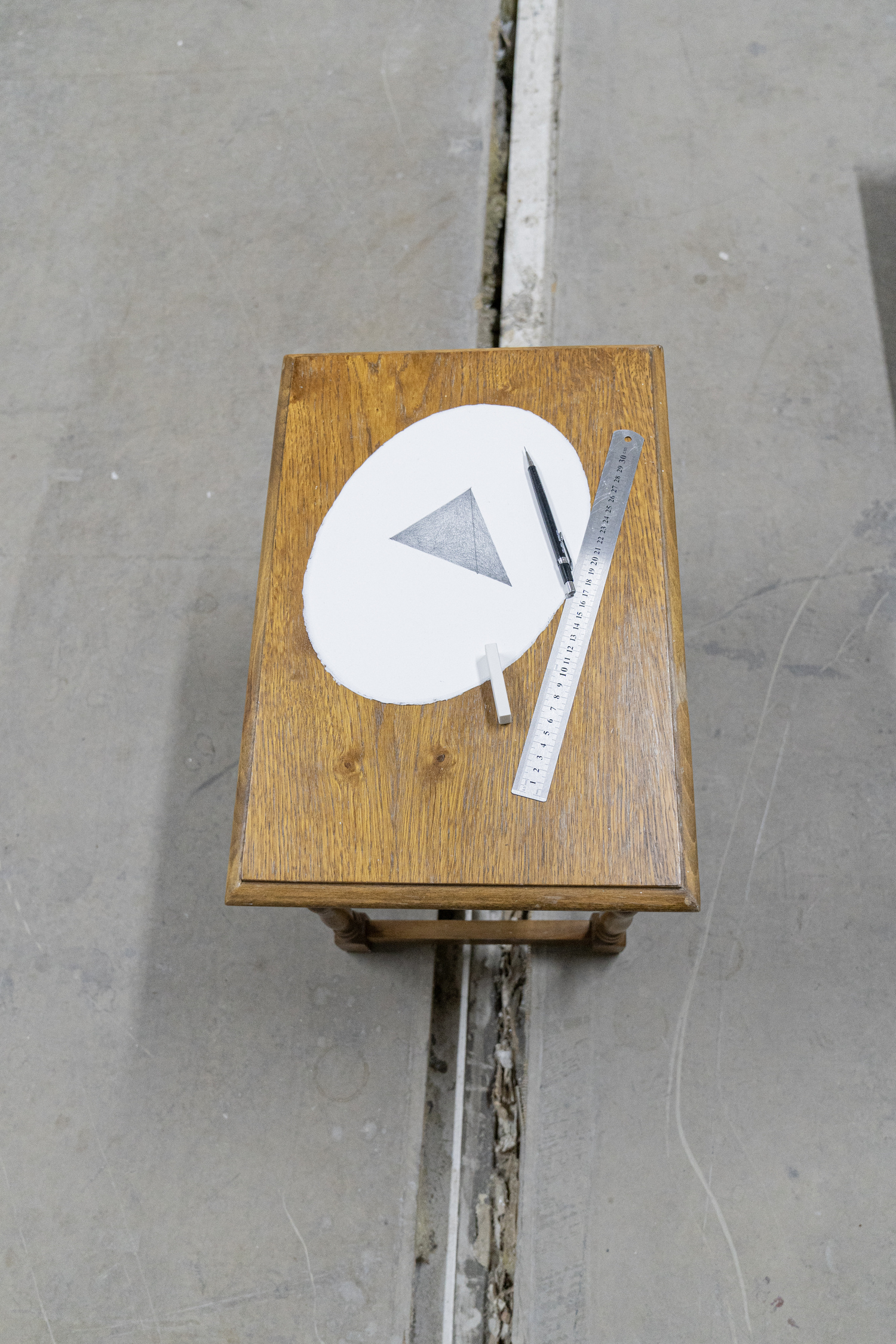Ordinary triangle
︎DE
Openstudio, Berlin
25.05.2024
Dear Guests,
Thank you for visiting my studio. Preparing for this open studio has been somewhat challenging.
Honestly, I haven’t had much time to think about my work recently, so I haven’t been able to spend
time in the studio. This is because I’ve been busy making a living, like most artists do. I also work as
a photographer. Fortunately, I enjoy taking portraits. Right now, I’m supplying photos to a Korean
perfume company. In short, I photograph and interview a variety of people living in Berlin and send
the results to the company in Korea. So, I started by photographing and interviewing people around
me, but most of them, coincidentally, turned out to be artists. Naturally, most people in my circle are
involved in some form of art.
After sending a few photos and interviews, the company president requested, “We need opinions
from ordinary people.” I thought, “Aren’t they all ordinary?”
A few days later, I received a sudden call from J., who was visiting Berlin for work. J. is someone I
met in Wolfsburg, and he works at Volkswagen. I thought, “Finally, I can photograph a ‘regular em-
ployee.’” But within ten minutes of meeting J., I realized how wrong I was. He lived a more artistic life
than any artist I had ever met. He was anything but “ordinary.” I took a few photos, but not once did
he appear to be anything other than an artist. This led me to ponder the difference between having
an “artist” job and living an “artistic” life, and what it means to be “ordinary.”
Have you ever heard of the so-called “ordinary triangle”?
*Most triangles have names, making it hard to create a truly ordinary triangle. For instance, a trian-
gle with all acute angles is called an acute triangle; one with a right angle is a right triangle; one with
an obtuse angle is an obtuse triangle; and one with all sides of different lengths is a scalene triangle.
Jacques Roubaud, a scholar, studied how to construct an ‘ordinary triangle’ with no special features.
The simplest method he devised is as follows:
1. Draw an equilateral triangle.
2. From one vertex, drop a perpendicular to the opposite side, bisecting
the equilateral triangle, and discard one half.
3. Add a right isosceles triangle with its shorter side equal to the middle
length of the remaining right triangle.
4. This results in a triangle with angles of 45°, 60°, and 75°.

However, since the ‘ordinary triangle’ has angles of 45°, 60°, and 75°, it can be called an acute trian-
gle, and since all sides are different, it can also be called a scalene triangle. Thus, Roubaud’s effort is
somewhat futile.
The interesting point here is that by giving it the name ‘ordinary triangle,’ it gains a special character-
istic, making it anything but ordinary. This touches on the philosophical question of what it means to
be ‘ordinary,’ ‘extraordinary,’ or ‘unique,’ which aligns with the paradox posed by Beckmann.*
So, what exactly is an ordinary person? Recently, I ended up photographing an actor. It seems I have
failed in my quest to find “ordinary people.” The president might think I’m an odd employee who
can’t even meet such a simple request.
Interestingly, my thoughts about this ordinary triangle were sparked by a more amusing event.
Twelve years ago, K. and I designed an album for a Korean band called “OKDAL” They recently
contacted me, wanting to release a vinyl version of their debut album <28> to celebrate their 12th
anniversary.
One of the symbols we used in the design was a triangle. While talking with K., I learned about the
ordinary triangle.
Life is strange that way. The things we did in the past and the things we do now, and the questions
that bother us today, somehow seem to connect. Over the past few weeks, I’ve met many people,
neglected my own work, wandered around to make a living, and suddenly found myself in my messy
studio a few days before the open studio event. Actually, an “open studio” is not an exhibition but
rather a visit to a more “realistic space” where artists work. So, I’ve been contemplating how best to
present my life and work in this setting.
So, this letter might just be a lazy artist’s ploy to share an amusing story with you. In my studio, you’ll
find photos of the people I’ve captured and a few books of my past works. Thank you for taking the
time to visit. I hope you enjoy what you see!
Sincerely,
MIK NIM
P.S. If you consider yourself an ordinary person, please get in touch. I’d love to photograph you.
(Though there’s a good chance you might be mistaken about being ordinary.)






